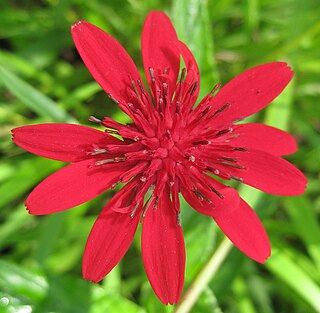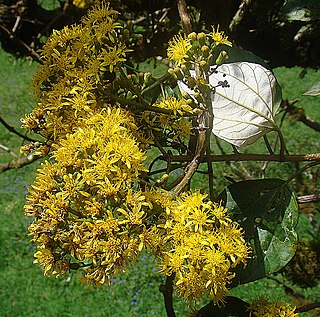| Anisopappus | |
|---|---|
 | |
| Anisopappus junodii | |
| Scientific classification | |
| Kingdom: | Plantae |
| Clade: | Tracheophytes |
| Clade: | Angiosperms |
| Clade: | Eudicots |
| Clade: | Asterids |
| Order: | Asterales |
| Family: | Asteraceae |
| Subfamily: | Asteroideae |
| Tribe: | Athroismeae |
| Genus: | Anisopappus Hook. & Arn. |
| Synonyms [1] | |
| |
Anisopappus is a genus of flowering plants in the family Asteraceae. [2] [3]
The genus is primarily native to Africa and Madagascar, with one species (A. chinensis) extending into China and Southeast Asia. [4]
- Species [1]
- Anisopappus abercornensis G.Taylor
- Anisopappus alticolus (Humbert) Wild
- Anisopappus anemonifolius (DC.) G.Taylor
- Anisopappus athanasioides Paiva & S.Ortiz
- Anisopappus bampsianus Lisowski
- Anisopappus boinensis (Humbert) Wild
- Anisopappus burundiensis Lisowski
- Anisopappus chinensis (L.) Hook. & Arn.
- Anisopappus corymbosus Wild
- Anisopappus davyi S.Moore
- Anisopappus discolor Wild
- Anisopappus exellii Wild
- Anisopappus fruticosus S.Ortiz & Paiva
- Anisopappus grangeoides (Vatke & Höpfner ex Klatt) Merxm.
- Anisopappus holstii (O.Hoffm.) Wild
- Anisopappus junodii Hutch.
- Anisopappus kirkii (Oliv.) Brenan
- Anisopappus latifolius (S.Moore) B.L.Burtt
- Anisopappus lawalreanus Lisowski
- Anisopappus lejolyanus Lisowski
- Anisopappus marianus Lawalrée
- Anisopappus orbicularis (Humbert) Wild
- Anisopappus paucidentatus Wild
- Anisopappus petitianus Lisowski
- Anisopappus pinnatifidus (Klatt) O.Hoffm. ex Hutch.
- Anisopappus pseudopinnatifidus S.Ortiz & Paiva
- Anisopappus pumilus (Hiern) Wild
- Anisopappus rhombifolius Wild
- Anisopappus robynsianus Lisowski
- Anisopappus salviifolius (DC.) Wild
- Anisopappus smutsii Hutch.
- Anisopappus sylvaticus (Humbert) Wild
- Anisopappus upembensis Lisowski












